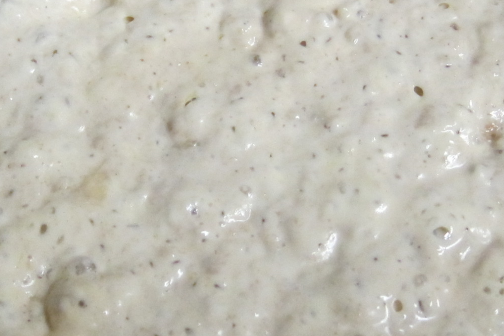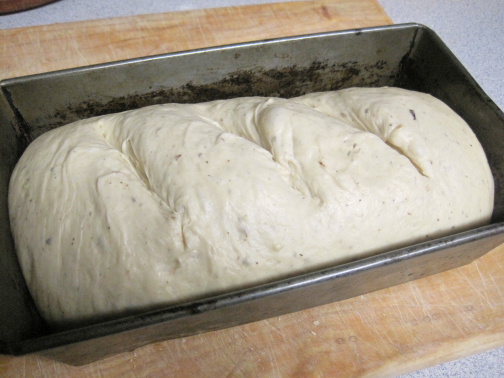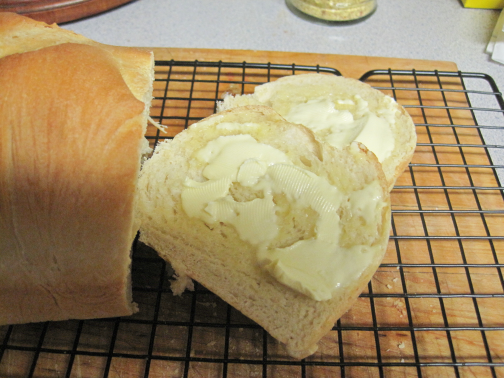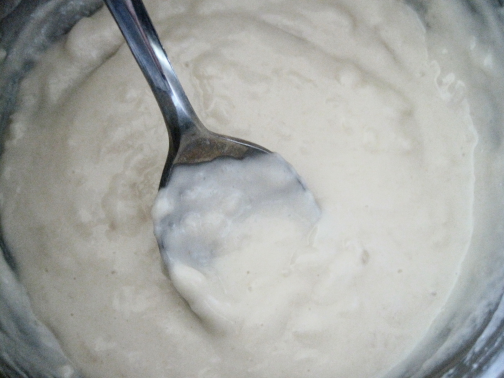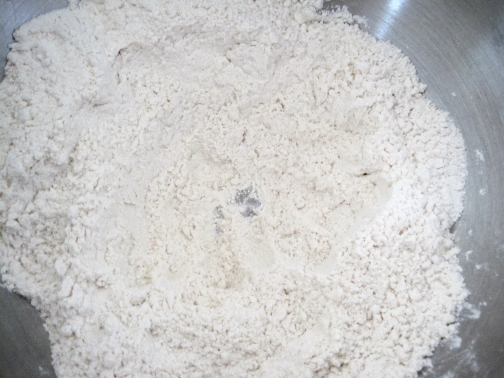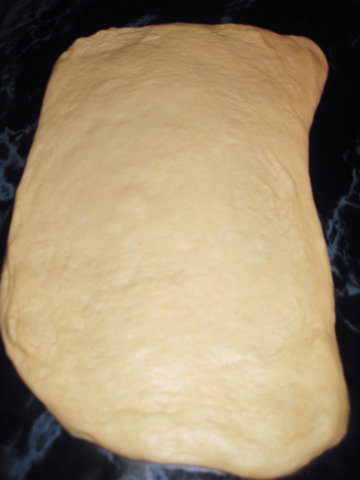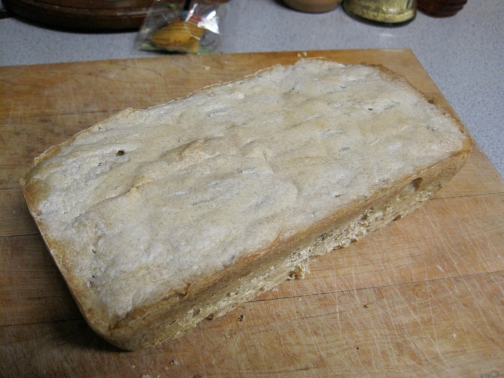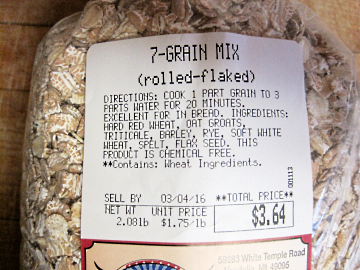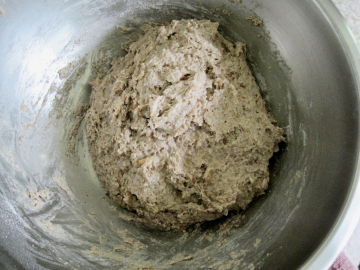On December 21, 2016, a colonoscopy was done. They didn’t find anything important, but they did manage to trigger “Bile Reflux.” In some ways this is similar to “acid reflux” or “GERT” — but it’s very different in that acid reflux is, well, acidic, while bile reflux is very alkaline. When one vomits or burps, it’s like vomiting or burping lye. And that’s a huge difference. Bile, like lye, eats through the mucous lining one’s throat. In the mouth, it destroys gum tissue and, beneath the tissue, the bone. One’s mouth becomes such a bloody mess that it’s impossible to eat.
I was trying (and, I think, succeeding) to get it under control until I suddenly started vomiting fresh blood, brillant red and full of bubbles. Since I have a positive tuberculin skin test — which only means I’ve developed the antibodies that destroy the tuberculin bacilli — the government decreed I be placed in a hospital’s isolation unit. (Hazmat suits, plastic or cardboard everything. (Including plastic stethoscopes that aren’t cold on the skin, but also don’t work very well, plastic IV stands, food served on plastic plates with plastic utensils, etc.) All this care — yet no one paid attention to the regime I was following to keep the bile reflux away! I’m very mildly diabetic, but I didn’t even get the diabetic diet. They did give me the Metformin I take for diabetes. They didn’t look inside my mouth to see why I couldn’t chew. — instead I got lectured for refusing to use my false teeth! (Not just once, but daily!) They wanted to try some extremely invasive tests to find the problem. I kept refusing, since my TB skin test had changed when I was only 12 years old, and I’ve never come down with tuberculosis. (My skin test was the result of living with my father for 12 years, and my father had an “arrested” case of TB.) After a week of this, the head of the infectious unit showed up in my room. Finally! A doctor old enough to remember the days of “arrested” cases of the old type of TB, tuberculosis before it mutated! I rather coldly pointed out, that, if they worried about TB, they should give my husband a skin test, since I’ve been living with him for over 40 years, taking none of the precautions my family of origin took around my father.
His argument became, “Well, if it wasn’t caused by TB, what did cause it?” I neither knew, nor cared. The bleeding had clearly stopped, and, the hospital no longer had a right to arrest me and drag me back to isolation; if they wouldn’t release me, I’d sue. “Oh but, until we get clearance from the government run CDC, we aren’t permitted to release you.” He was old enough to understand, but his judgment wasn’t enough. The government now had more control over what happened in a hospital than the doctors. Not only that — he couldn’t even change my diet! That was Michelle Obama’s “eating healthy” campaign’s contribution to my misery. I pointed out that I couldn’t eat 90% of what they served. I either couldn’t chew it or had already proved to my own satisfaction that any type of fruit triggered the bile reflux. He did telephone the CDC — at least that’s what he said — and I think he did since it did trigger a long, long delay in getting my “official” tuberculin test back from the government CDC. So there I sat. Catch-22. I’ll never know what went on behind the scenes, but eventually I got out of the hospital. (Obamacare/Medicare did not cover the expense BTW.) Several weeks after I got out of the hospital that time, the CDC tuberculin report came back as a “false positive.” I wouldn’t even have known that much if I didn’t check MyChart online.
It’s been a very, very long time since I’ve had decent health care. I’ve become very bitter about it. I can’t live without it, but my old GP retired almost 40 years ago. there simply hasn’t been a doctor that actually stayed in this area for more than a year or two, and I’m not easily transported the 300+ miles it would take to get me to a decent clinic every time I need to see a doctor. So I went to the local clinic….
Immediately after my stroke in 2006, I had major problems with my endocrine system. The last time I saw my Primary Care Physician at the local clinic, she mentioned it was time to have my kidneys checked out again, and she scheduled the appointments, which I grudgingly went to, and, as usual, those appointments led to more appointments, more tests. and so it went for a couple of months, until, very suddenly, I got a phone call from the local clinic. My husband had telephoned them to get a prescription refill for a drug (Valium, which I officially take for my PTSD, but actually take as a muscle relaxant.) The phone call came in on October 18, 2017. I remember the exact date and time, only because I wanted to be completely undisturbed that day, and had my cell phone on (usually I just keep it turned off) and the clinic called my cell phone! I’d given them my cell phone number (cell phones are now essential you know, and if you don’t have one, the government provides you with one) under protest, emphasizing that it was never to be used. Some nurse I’d never heard of, informed me my valium couldn’t be refilled unless I came in and signed a a drug agreement, and, BTW, my thyroid needed changing. I said, “There’s no way I’m letting you change my meds!” My thyroid is a touchy subject, and it had just been changed by the “endocrinologist” who was actually a DO, and thus knew absolutely nothing about anything other than diabetes… The American Medical Association only let DO’s call themselves endocrinologists when too many people needed help with diabetes, and all the actual endocrinologists (with nine years more training, and two more residency’s).
That started a huge change in my life. My endocrine system has never been “normal” — and I’m not going to let myself argue about what “normal” means. Changing my thyroid according to the “normal” tables doctors use makes me extremely hyperthyroid — last time someone tried changing my thyroid following “normal” procedures I lost 40 pounds during an incredibly uncomfortable month, yet going without thyroid hasn’t been an option in the past. I won’t put myself through that again. I really loath pain. Pain frightens me. So I’ve been trying learn the way through current procedural healthcare as I rapidly become sicker with whatever is causing the bile reflux.
Finding a new primary care physician is essential to obtaining and paying for any type of medical care. My husband and I are old, retired, living on a fixed income just like every other senior. We’re better off than most, since we own land and our home. I’m unwilling to sell our land to obtain really good health care — though I’ve known people that have chosen to sell their home to go to some of the better clinics. They die in nursing homes eventually. Or they live without a home. Or they, like everyone else, live with the consequences of any choice one is still permitted to make.
I’m not going to let myself go into a long, complex political rant.
As Americans are discovering that there are too many people and not enough basic resources — a situation which has existed forever — the seething mass of humanity has struggled to find solutions to that particular problem. Having too many people who feel “entitled” to such basic human needs as security and American values leads to squabbles in politics, multiple violent outbreaks, and a tremendous anger. I made my personal choices long, long ago. I choose what I call “freedom.” That means I live or die making my own choices. Literally.
At the moment I’m as close to death as I’ve ever known. An unknown autoimmune disease (ie, my body immune system is attacking rather than defending my body.) My body repulses me. I’m surrounded by a new smell that’s coming from my own body, my hands hurt so much that typing is hard to bear. It’s very difficult to think clearly. The kidney specialist’s tests show extremely high protien in my blood and/ or urine. The amount of pain in not acceptable. I might be able to help control the pain by limiting stress. How does one eliminate stress when one could be dead within the next week?
My current solution to simplify my life, to do what I still enjoy doing. To fully appreciate the beauty that exists outside my window. To celebrate the fact that God is essentially good. To enjoy moments with the people I love. No longer a teacher or a student, I try to maintain my own level of joy. That’s all. Nothing more.





